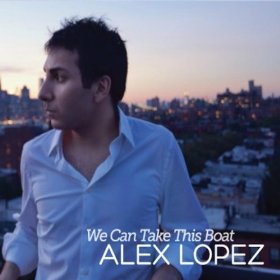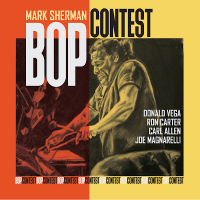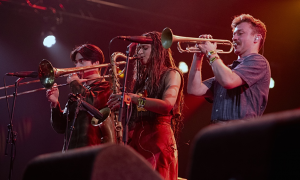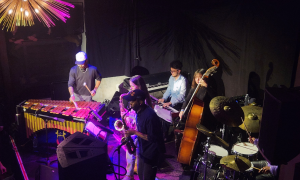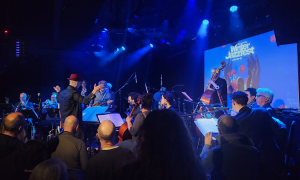Home » Jazz Articles » Live Review » Bohemian Caverns Celebrates 85 Years of Historic Jazz
Bohemian Caverns Celebrates 85 Years of Historic Jazz
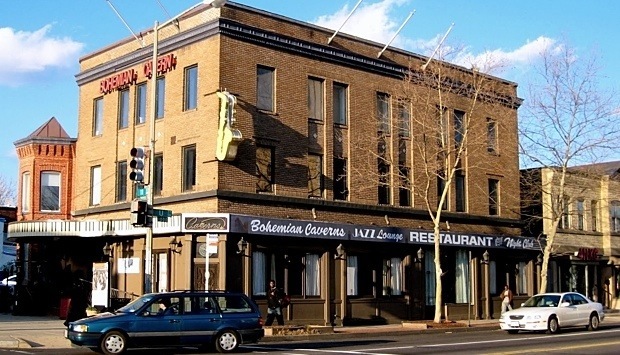
The smoky clubs, dark corner joints, impromptu lofts, theaters, noisy dinner clubs, and hidden basement bars of jazz are emblazoned in our collective imagination and provide definition to entire genres of film and literature, conjuring instantly lost eras and evoking a powerful sense of place and meaning for modern audiences to this day. Moreover, to the aficionado, the names of particular clubs have become code words for entire musical movements and inspire in some religious-like pilgrimages to those few historic venues still in operation.
At a more basic level, the clubs and theaters of jazz are essential because jazz is an inherently improvisatory art form taking shape in the live venue. Its musicians need a place to play. In short, the physical spaces of jazz have always constituted an integral part of its history, making the reformation of Bohemian Cavern's legacy that much more important an achievement.
Part of that achievement is owed to the philosophy that the Cavern's operator, Omrao Brown, has pursued in his quest to restore the Caverns to its proper place in the pantheon of jazz clubs. Brown and his business partners have approached the task of renewal with a mixture of practicality and respect for tradition, embracing the club's legacy while creating a fully functioning space that supports and brings together today's jazz community.
"We feel like Bohemian Caverns was at one point an integral part of the community and we'd like to bring it back to that point," explains Brown, "[I]t has intrinsic value. It's one of the oldest jazz clubs in the same physical space on the planet. I feel that is an important thing to preserve."
Mirroring the history of its home city and the art form that kindled its beginning, the Caverns has seen both troubled times and periods of great success. Today's Caverns is located in the same space as its original incarnation, the Club Caverns, which opened in 1926 as a basement music venue beneath a local pharmacy. Though not open continuously since that time, this nonetheless makes Bohemian Caverns one of the oldest jazz clubs in existence, and certainly one of the few still housed in its original location.
In its initial incarnation, the Caverns quickly became a hot spot for the vibrant African- American arts scene of the times and showcased the top performers of the era, including Duke Ellington and Cab Calloway. The Caverns also became known for its late night jam sessions (a jazz tradition that Brown has revived at the Caverns), which during prohibition included access to hidden stashes of liquor served discretely alongside a menu of southern staple foods.
As did many other venues across the nation, the Caverns shut down in the 1940s, and then reopened again in the '50s as Crystal Caverns. A few years later, the club underwent its final name change to Bohemian Caverns and came under the ownership of Tony Taylor, a promoter who reshaped the Caverns into a premier jazz venue of the city. Throughout the sixties, the nation's top players performed there, including Miles Davis, Bill Evans, Charles Mingus, and John Coltrane. By 1968, however, the club was closed again, one of many local establishments to suffer in the aftermath of the riots that swept the U-Street District following Martin Luther King's assassination. It would take decades for the famous U-Street Corridor and surrounding area to recover.
In fact it was not until the late '90s when, buoyed by a more general economic revival throughout Washington, U Street began a rapid resurrection. Amidst this economic revival, the Bohemian Caverns was reopened by Amir Afshar, who while maintaining it as a jazz venue did so largely in name only, failing to genuinely engage with the surrounding jazz community, the club's long history, or the resurgence of interest in jazz music beginning to take hold throughout Washington, DC.
In 2006, the current owner and operator, Omrao Brown, took over and in just a few short years has transformed the club into the anchor of Washington's jazz community. The Caverns is now where both venerable voices and the young lions of jazz alike come to play. It's become a hub for the city's annual jazz festival and a home to local musicians. And once again, late night jam sessions ignite on a regular basis. Moreover, the club's growing reputation has begun attracting performers of national significance, allowing audiences the pleasure of intimate evenings of music with some of the biggest jazz names in a casual environment rarely available. For example, recent performers include Ron Carter, Pharoah Sanders, the Heath Brothers, Jacky Terrasson, Marc Carey, Roy Hargrove, and JD Allen. The club also hosts its own jazz orchestra and regularly features leading local acts.

Achieving this kind of roster was no easy feat and did not happen overnight. It required equal measures of dedication, luck, and smart business planning.
"A jazz club is not what you would open to be a money maker," jokes Brown. "If you think, 'I want to open a business that is going to make a ton of money' no one is going to say a jazz club."
But the son of musician and educator Leonard Brown, Brown, with his partners, were committed to opening a space where they could present live music, particularly jazz. "[My father] produces the John Coltrane memorial concert in Boston, he just put out a book [on Coltrane] that he edited and contributed to. So I had a little of it in my blood to say the least."
The original business plan was not specific to the Caverns or even to Washington, DC. It was, however, always jazz-focused and Brown, living in Boston at the time and working in "corporate America," collaborated with his business partners to identify potential locations. After profiling Washington and U Street, they decided DC was underrepresented in terms of restaurants and venues and fit the profile they were seeking. Still, the final decision was not without risk. At the time, the U-Street revival was still quite nascent.
"It was weird. We felt this vibe was coming-there was not a ton we could point to, or say for sure would take off here. But luckily it did." Brown's gamble proved more prescient than even he imagined at the time. A citywide economic revival and migration from suburbs to city ensued shorty after Brown took occupancy of the Caverns. This, plus the changing profile of DC residents, contributed to the Caverns' early success.
As Brown explains, "I do feel that Washington has an affinity for art that is coming to the city in a younger generation, a younger professional generation...I also think there [is a] dynamic created by recorded music being largely available free and the United States being such a commercial driven society. One of the pastimes of America is how do you spend your money. And if you don't have to spend it on recordings then maybe you start spending it on live music. I think this is one of the more healthy times in the last 30 years for live music."
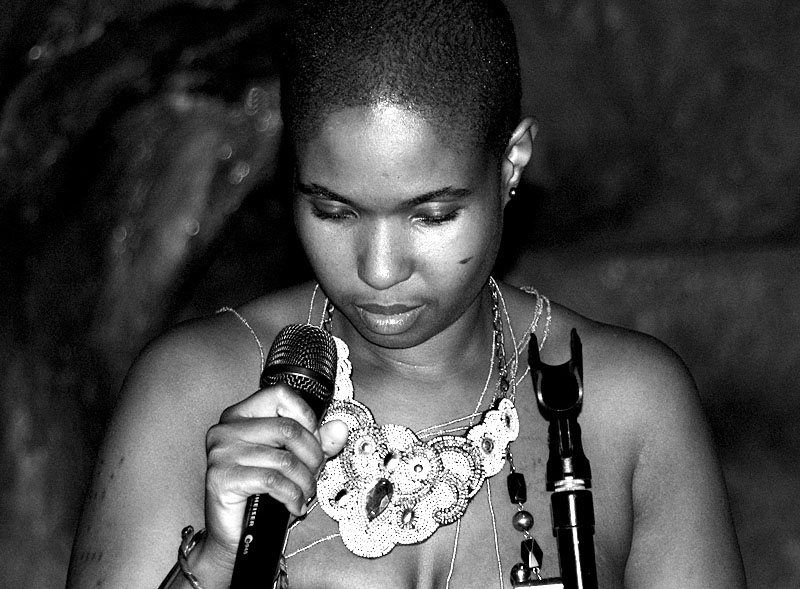
The early years for the Caverns under Brown were spent rehabilitating the club's image and building its booking roster. At the same time, the revival spirit Brown had sensed when he selected the Caverns exploded faster than expected. All up and down U Street, restaurants began opening and a new, younger generation of Washingtonians began reclaiming U Street, rebuilding areas that had been shuttered for nearly 30 years. This new generation, Brown believes, is particularly open to jazz, though defining just what they have in common is hard to pin down. "I don't know how you could do that with one word, there isn't necessarily a box they fit it," says Brown. "But I do feel there is a commonality between the people that are now coming back to DC-and the appreciation of art forms like jazz is in line with that." Half-jokingly, Brown agrees one might label them a new breed of "bohemian,' open to a cross-section of art and music.
While the Caverns benefited from this overall shift in the DC economy, as well as Brown's smart management, one key turning point came through sheer luck. Brown, attending an event on Capitol Hill, noticed bassist extraordinaire Ron Carter in attendance. At the time, Brown was only able to introduce himself and chat briefly. He must have made a strong impression, however, because months later, when Brown followed up with Carter to inquire about a potential performance at the Caverns, he found Carter unexpectedly responsive. A short while later, Carter made the trip to DC and played three nights at the Caverns. More importantly, Carter offered to repeat the session as often as he could and has since been making semi-regular appearances.
Commenting on the Caverns, Carter put it in simple terms, "I played here somewhere back in '60 or '63, back when Bohemian Caverns had different management of course... so my experience goes way back to '63. I like this place and we come back here as often as my schedule allows because I like the intent of the management here. I like that they are trying to bring high quality jazz to a great city in a state that hasn't had real quality jazz for a period of time. The atmosphere is comfortable, they have a great kitchen, the service is always good, the piano is always tuned, and I can't say more than that."
Carter's return to the Caverns did more than raise its local profile and bring in audiences. It went a long way to symbolically marking the Caverns' successful rehabilitation to national status.
Nonetheless, Carter's imprimatur alone would not have sufficed to launch Bohemian Caverns' next phase of success. The underlying foundations of the Caverns' success is Brown's straightforward operating philosophy based on community engagement and respect for musicians.
Local artist and rising star Akua Allrich agrees that part of what makes the Caverns successful is how it approaches musicians and the local community. "My experience as a musician has been very special at the Cave...I was certainly spoiled by the wonderful treatment that I received from all of the staff....[Brown]'s always fair and honest, and just overall wonderful to do business with. They just genuinely seem to appreciate the art of music and truly treat musicians with lots of respect."
Allrich expounded on the Caverns' impact on the local scene more broadly. "There seems to always be a push to expose the wonderful talent in the area, from the Bohemian Caverns Jazz Orchestra to the various features on the weekends, to the other features on Thursdays and Sundays. They always have something going on at the Cave. There's even an open mic on Wednesdays. There is an opportunity for every type of musician to explore and share their talents and even network with other musicians. They really are pioneers in this awesome renewal of musical energy that is going on all over!"
New York-based saxophonist JD Allen echoed these sentiments, emphasizing that when he comes to DC he often chooses the Caverns as a venue. Allen went as far as to record a live album there in 2010, which is currently set for release under the working title JD Allen Trio: Live at the Caverns.
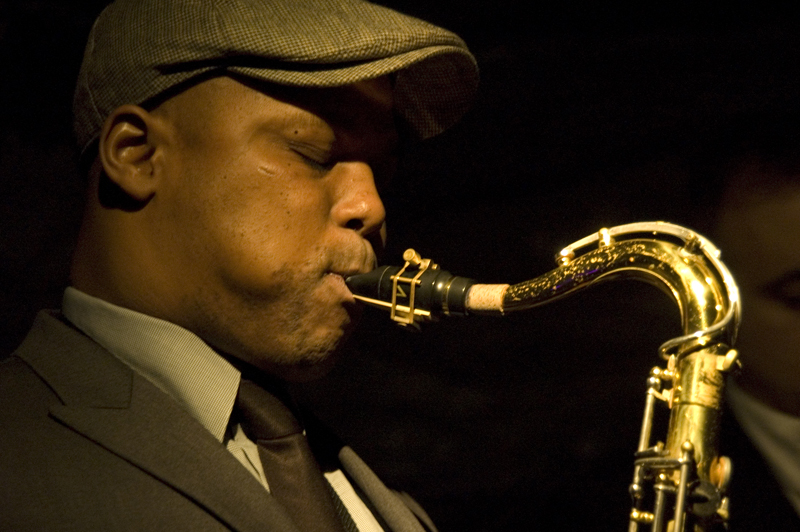
Allen explained this choice, stating, "The historical significance of Bohemian Caverns holds a dear place in the history of jazz venues. Omrao Brown has been able to successfully rejuvenate the Caverns with seamless effort. Playing there is like playing in your living room-it's just that intimate. There's a freedom that's obtained due to the fact that Brown lets an artist 'search and discover' at no risk of being told what to do. He expects YOU to be YOU. Bohemian Caverns is a jewel."
The comments of these and other artists reflect more than an abstract sensibility or personal approach incidental to Brown's leadership. The goal of creating a sense of community was built right into the business plan established by Brown and his partners, who began by fostering connections to the local musicians and jazz education institutions of DC, including, of course, Howard University.
"We didn't want to become a money sponge," explains Brown. "Our ticket price reflects that. We thought it was extremely important for us to be accessible to kids that are high school or college age. Especially with Howard being right in our backyard, you can't ask some kid to spend $45 and $15 minimum to find out if he likes the music you want them to have an appreciation for."
This open-door approach stands in sharp contrast to the previous owners, who failed to tap the extensive resources of DC's jazz scene. Especially at the beginning, the Caverns benefited greatly from this access to local talent, or as Brown puts it, "I hadn't booked a jazz club before, so you start with a Rolodex of no one. And you have to fill 52 weekends and off nights and all that with good music, which was a concern. So equally important is the local jazz community. It has a ton of excellent jazz musicians, so while we may not have had the biggest names on the billboards for the first couple years, we always had great music downstairs...[T]he musicians' community, the jazz community specifically, has been very supportive, whether that be local, regional, national, [or] international."
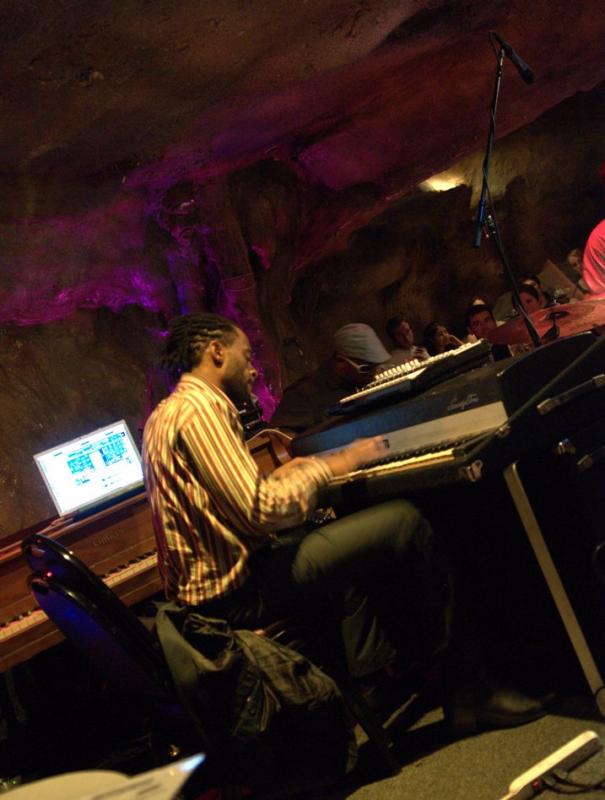 According to Brown's thinking, the impact of this community approach is more than dollars and cents. It is about making a long-term investment in jazz as an art form. "The reality is that all of our legends... are not going to be around forever. If you are stuck just presenting what is big, [then] who is next and how do they get to that? Somebody has to give these people a chance to play and somebody has to listen to the music just for the music. What is the platform for developing the next legends? It always traditionally has been clubs, but it is hard to point to more than a handful...[of] traditional jazz clubs that don't present other music and can do it more than two nights a week. That's a lost art. It just doesn't exist. You have to be committed to it."
According to Brown's thinking, the impact of this community approach is more than dollars and cents. It is about making a long-term investment in jazz as an art form. "The reality is that all of our legends... are not going to be around forever. If you are stuck just presenting what is big, [then] who is next and how do they get to that? Somebody has to give these people a chance to play and somebody has to listen to the music just for the music. What is the platform for developing the next legends? It always traditionally has been clubs, but it is hard to point to more than a handful...[of] traditional jazz clubs that don't present other music and can do it more than two nights a week. That's a lost art. It just doesn't exist. You have to be committed to it." Brown's commitment to this vision extends beyond the day-to-day operations of the Caverns, informing his ultimate goal for the future of converting the Caverns to a non- profit structure. "The idea is to put a non-profit function...around the Caverns in a way that will allow it to be here indefinitely, with other arms additionally, more educational outreach, fundraising, 'cause its not going to make anyone a ton of money. But it has intrinsic value. Hopefully this place will stay here forever-keep its history."
While accomplishing this final transformation may be a ways off, the vision informs the daily operations and tone of the Caverns even as it celebrates its 85th anniversary. A sense of continuity, high aspirations, and artistic dedication breathes through, making a night at the Caverns a unique experience-one that audiences return for time and again.
To paraphrase another local musician, what makes Bohemian Caverns special is the sense of family and belonging that Brown cultivates. This rare sense of community in a cut-throat industry provides a welcome backdrop for the club's rich and diverse musical offerings. It also contributes to reviving a facet of DC that, though never entirely lost, was elusive during the economic and artistic doldrums of recent decades.
Tags
Live Reviews
Franz A. Matzner
United States
District Of Columbia
Washington
Bohemian Caverns
duke ellington
Cab Calloway
Miles Davis
Bill Evans
Charles Mingus
John Coltrane
Ron Carter
Pharoah Sanders
Heath Brothers
Jacky Terrasson
Marc Carey
Roy Hargrove
JD Allen
Leonard Brown
PREVIOUS / NEXT
Support All About Jazz
 All About Jazz has been a pillar of jazz since 1995, championing it as an art form and, more importantly, supporting the musicians who make it. Our enduring commitment has made "AAJ" one of the most culturally important websites of its kind, read by hundreds of thousands of fans, musicians and industry figures every month.
All About Jazz has been a pillar of jazz since 1995, championing it as an art form and, more importantly, supporting the musicians who make it. Our enduring commitment has made "AAJ" one of the most culturally important websites of its kind, read by hundreds of thousands of fans, musicians and industry figures every month.
Go Ad Free!
To maintain our platform while developing new means to foster jazz discovery and connectivity, we need your help. You can become a sustaining member for as little as $20 and in return, we'll immediately hide those pesky ads plus provide access to future articles for a full year. This winning combination vastly improves your AAJ experience and allow us to vigorously build on the pioneering work we first started in 1995. So enjoy an ad-free AAJ experience and help us remain a positive beacon for jazz by making a donation today.Near
Washington Concerts
Jan
17
Sat
Jan
17
Sat



